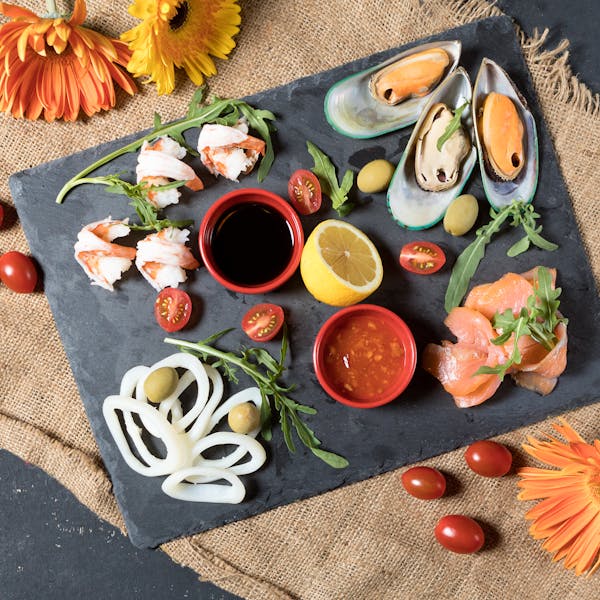The Best Shellfish Hiking Food To Go. You need to eat well during a hiking adventure so as not to run out of energy. Those who love shellfish have still more protein-packed, nutrient-dense options for on-the-go hiking-style provisions. Sometimes, Shellfish Snacks Could Be Your Next Hiking Sustenance — Here Are Three Reasons Why
The Best To-Go Hiking Food With Shellfish
The powerhouse of Nutrients -Shellfish] hiking food Lean protein — it contains all essential nutrients including vitamin B12 and also minerals like zinc or iodine; both these are very important for energy metabolism and normal muscle function. Shellfish You will need the sustainable energy shellfish to keep you going in terms of hard hiking. Shrimp crab lobster are all great ideas whether games are done simply or found inside another dishPACK A MIX OF PASTASCppType: Tim Benner EatThiscomWhether it is shrimp, occasion lobster crave shellfish will refill our body shops for painful backpacking efforts.
Shellfish snacks are portable and convenient.

However, Shellfish snacks, as a hiking snack, are pretty much A game C HANGER. There are many pre-packed and vacuum-sealed options which makes them easy to carry along with you or store without the need for refrigeration. Convenience so you can have scrumptious and healthy food without the trouble
ConvenientOn-the-Go Hiking Shellfish Snacks
Therefore, For the ultimate to-go hiking shellfish snack, go for shrimp jerky, crab chips, and lobster pâté. The Most Delicious Airport Snacks for Diabetics to Enjoy Traveling on a PlaneThese snacks are light, easy to pack, and have that umami taste.
Why Shellfish is the Perfect Hiking Food
Shellfish hiking food is the best portable seafood snack for hiking.
In addition, shellfish offers nutritional benefits (high protein, omega-3s, low calories). Shellfish are low in calories and rich sources of lean protein, healthy fats, and many micronutrients. Most of the fat in shellfish is omega-3 fatty acids, which offer a range of health benefits, such as improving brain and heart health.
How the compact size of shellfish makes it easy to carry.
Live shellfish (mussels & oysters). Clean (no sand, mud, barnacles). Intact closed shell, or closes when tapped. No unpleasant odors. Shellfish (scallops, mussels, oysters) • Scallop flesh white to cream.
Some common types of fish hiking snacks
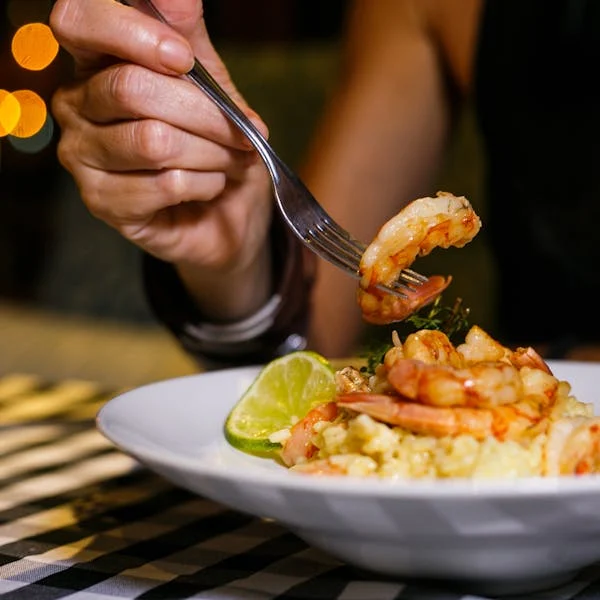
Shrimp
Shrimp are characterized by a semitransparent body flattened from side to side and a flexible abdomen terminating in a fanlike tail. The appendages are modified for swimming, and the antennae are long and whiplike. Shrimp occur in all oceans—in shallow and deep water—and in freshwater lakes and streams.
Crab
Most crabs are scavengers, eating whatever they can find and catch, whether it’s dead or alive. Crabs can be carnivores, who eat meat, or omnivores, who eat both meat and plants.
Mussels
Mussels are rich in marine Omega-3s, EPA, and DHA. If you are trying to lose weight, mussels give you a lot of nutrition without a lot of calories. Prepare the mussels in a way that does not add calories. Try steaming them and adding flavor with no-calorie seasonings.
Oysters
- Perfect Pairings: What to Serve with Oysters
- Sizzling Companions: Grilled Asparagus and Bacon. …
- A Taste of Elegance: Lobster Tails and Lemon Herb Couscous. …
- Crispy Additions: French Baguette and Fried Shrimp. …
- A Fresh Twist: Cucumber Dill Salad and Garlic Spinach. …
- Oysters and Wine: Pairing with White Wine and Butter Sauce.
Types of Shellfish to Pack for Hiking
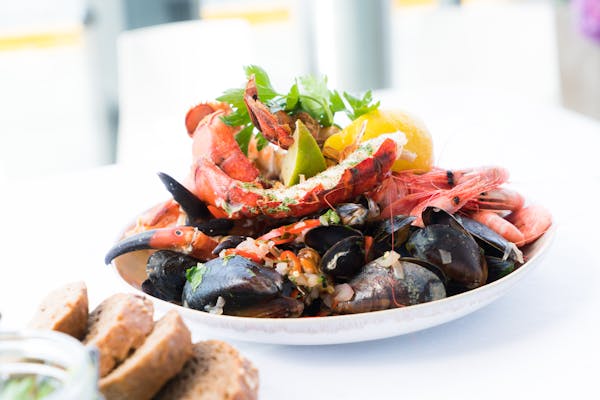
- Shrimp: High in protein, easy to prepare and pack.
- Canned Crab Meat: Lightweight, easy to add to crackers or salads.
- Dried Mussels or Oysters: Portable, have a unique flavor, and can be eaten straight from the pack.
- Smoked Clams or Scallops: Rich taste, excellent for adding to trail mix.
- Each pairing offers unique flavors and nutritional benefits when combining shellfish with different types of crackers, dried fruits, or nuts. Here’s a detailed comparison:
Crackers
Whole Grain Crackers:
Rich in fiber and complex carbs, these crackers pair well with shellfish for sustained energy. The hearty flavor complements the shellfish’s natural brininess.
Rice Crackers:
Lighter and crispier, rice crackers provide a delicate crunch that won’t overpower the taste of shellfish. Ideal for those who prefer a subtle pairing.
Cheese-Flavored Crackers:
The cheesy flavor adds a savory note to the combination, enhancing the richness of shellfish like crab or lobster.
Dried Fruits
Cranberries:
Their tartness contrasts nicely with the savory-sweet taste of shellfish, offering a balance of flavors. Good for adding a pop of color and a bit of acidity.
Apricots:
The natural sweetness of apricots can balance out the saltiness of shellfish, providing a sweet-savory combination. Great for those who enjoy sweeter snacks.
Raisins or Sultanas:
These add natural sweetness and chewiness, pairing well with shellfish varieties that are less salty, like scallops.
Nuts
Almonds:
Their mild, slightly sweet flavor complements shellfish without overpowering it, while also adding a satisfying crunch. They’re rich in healthy fats, enhancing the nutrient content.
Cashews:
With their creamy texture, cashews pair well with shellfish like shrimp, adding a buttery flavor. Great for those who prefer a softer crunch.
Walnuts:
The earthy flavor of walnuts contrasts with the briny taste of shellfish, offering a complex and bold combination. Ideal for adventurous eaters who enjoy strong flavors.
Types of Shellfish to Pack for Hiking
| Shellfish Type | Nutritional Benefits | Preparation & Packing |
| Shrimp | High in protein | Easy to prepare and pack |
| Canned Crab Meat | Lightweight, easy for crackers | Ready to eat, but bulkier |
| Dried Mussels | Unique flavor, low calories | Portable, eat straight from the pack |
| Smoked Clams | Rich taste, great for trail mix | Easy to incorporate into various snacks |
How to Pack Shellfish for Hiking
“best shellfish hiking snacks,” “portable seafood hiking foods.”
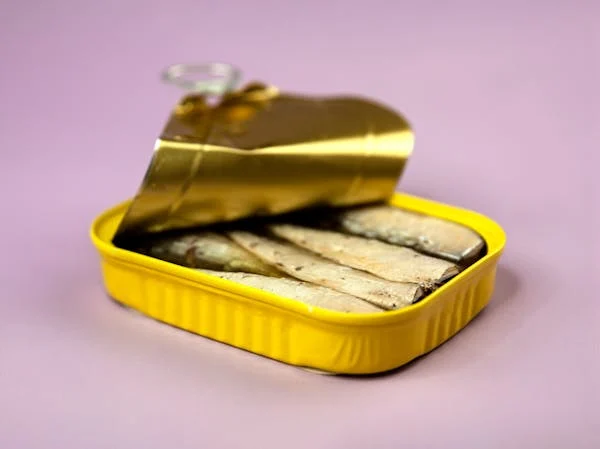
As a result, A variety of foods is key to keeping most backpackers motivated on the trail. Try to aim for a balance of flavors (salty, sour, sweet, spicy) and textures (soft, crunchy, crumbly, crispy) to keep your palate satiated. Make sure you have a balance of carbohydrates, protein, and fats.
Canned Shellfish
- Comes pre-cooked and preserved, ready to eat. Sturdy cans protect the shellfish.
- Heavier and bulkier. Once opened, it must be consumed soon to prevent spoilage.
- Choose smaller cans for single servings, and bring a can opener if needed.
Vacuum-Sealed Shellfish
- Lightweight and compact, vacuum sealing extends shelf life without refrigeration
- Must be kept cool if fresh; shelf-stable options are limited.
- Store in a cooler bag with ice packs, especially for longer hikes. Check for tears in the packaging.
Freeze-Dried Shellfish
- Very lightweight and has a long shelf life without refrigeration. Can be rehydrated on the trail
- May not taste as fresh as other options. Requires water for rehydration.
- Pack in airtight containers to protect from moisture, and bring extra water for rehydrating.
- Additionally, Each method has its benefits, with freeze-dried shellfish being the most lightweight option for long hikes.
DIY Shellfish Hiking Snack Recipes

Here are some easy-to-make DIY shellfish hiking snack recipes that are nutritious, portable, and perfect for your next outdoor adventure:
Shrimp Jerky
Ingredients:
- 1 pound raw shrimp (peeled and deveined)
- 2 tablespoons soy sauce
- 1 tablespoon honey
- One 1 teaspoon garlic powder
- 1 teaspoon smoked paprika
- 1/2 teaspoon black pepper
Instructions:
- In a bowl, mix the soy sauce, honey, garlic powder, smoked paprika, and black pepper.
- Add the shrimp to the marinade and coat well. Let it sit in the refrigerator for at least 1 hour.
- Preheat a dehydrator to 145°F (63°C) or use an oven on the lowest setting.
- Arrange the marinated shrimp in a single layer on the dehydrator trays or a baking sheet.
- Dry for 4-6 hours in the dehydrator or oven, until the shrimp reaches a jerky-like texture.
- Let it cool and pack it in an airtight container or resealable bag for the trail.
Shellfish Trail Mix
Ingredients:
- 1/2 cup smoked clams or oysters (drained)
- 1/4 cup almonds
- cup pumpkin seeds 1/4
- 1/4 cup dried cranberries
- 1/4 cup dark chocolate chips (optional)
- 1 tablespoon sesame seeds
Instructions:
- First, chop the smoked clams or oysters into bite-sized pieces. Then, mix all the ingredients in a bowl. Finally, pack the trail mix in resealable bags for easy snacking on the go.
Crab Spread Wraps
Ingredients:
- 1 can (6 ounces) crab meat (drained)
- 2 tablespoons cream cheese (or a dairy-free alternative)
- 1 tablespoon lemon juice
- 1 tablespoon chopped chives
- Salt and pepper to taste
- Tortilla wraps (whole grain or gluten-free)
Instructions:
- In a bowl, combine the crab meat, cream cheese, and lemon juice, then add the chopped chives, salt, and pepper. Next, spread the mixture evenly onto the tortilla wraps. After that, roll up the wraps tightly and slice them into bite-sized pieces. Finally, pack them in a resealable bag or container for a delicious hiking snack.
Mussel Energy Bars
Ingredients:
- cup freeze-dried mussels (crushed into small pieces)
- 1 cup rolled oats
- 1/2 cup almond butter
- 1/4 cup honey
- cup shredded coconut 1/4
- 1/4 cup sunflower seed
- 1/2 teaspoon sea salt
Instructions:
- In a saucepan, warm the almond butter and honey over low heat, stirring continuously until smooth. Meanwhile, in a bowl, combine the rolled oats, crushed mussels, shredded coconut, sunflower seeds, and sea salt. Next, pour the warmed almond butter mixture into the bowl and mix thoroughly until all ingredients are well combined. Then, press the mixture into a lined baking dish and refrigerate for 1-2 hours. Finally, cut them into bars and pack them individually for a high-protein trail snack.
Smoked Scallop Skewers
Ingredients:
- 8-10 smoked scallops
- 8-10 cherry tomatoes
- 1/2 cup cubed cheese (optional)
- Skewer sticks
Instructions:
- Start by threading the smoked scallops, cherry tomatoes, and cheese cubes onto the skewer sticks, alternating the ingredients. Then, pack the skewers in a resealable bag or container, and be sure to keep them in a cooler if you’re hiking in warm weather to maintain freshness. These recipes offer a mix of flavors and textures to keep you fueled and energized during your hike. Happy trails!
Benefits and Downsides of Shellfish Hiking Food
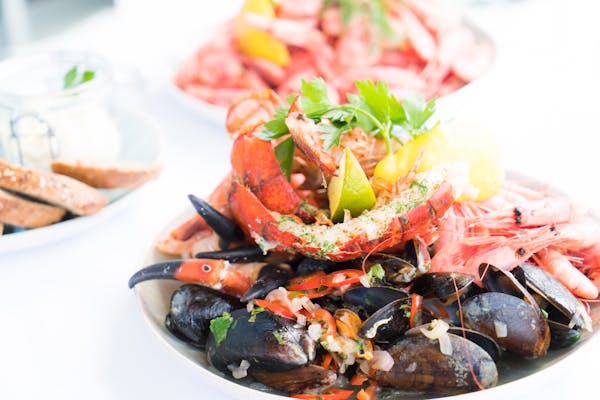
Shellfish — which can be divided into crustaceans and mollusks — are loaded with lean protein, healthy fats, and micronutrients. They may aid weight loss, boost immunity, and promote brain and heart health. Still, shellfish may contain heavy metals and cause foodborne illness and allergic reactions.
Benefits of Shellfish Hiking Food
High in Protein
Shellfish, such as shrimp, crab, and mussels, provide a protein-rich snack that helps maintain energy levels and supports muscle recovery after long hikes.
Nutrient-Dense
Shellfish are packed with essential nutrients like omega-3 fatty acids, vitamin B12, iron, and zinc, which help reduce inflammation, support immune function, and maintain overall health during outdoor activities.
Portable and Lightweight
Many shellfish options are available in portable forms like canned, vacuum-sealed, or freeze-dried, making them convenient and lightweight to carry in a backpack.
Variety of Flavors
Shellfish offer diverse flavor profiles, from smoky to salty, enhancing the taste of trail snacks compared to more traditional hiking foods like nuts and energy bars.
Long Shelf Life
Vacuum-sealed or canned shellfish can have a long shelf life, making them ideal for multi-day hiking trips.
Downsides of Shellfish Hiking Food
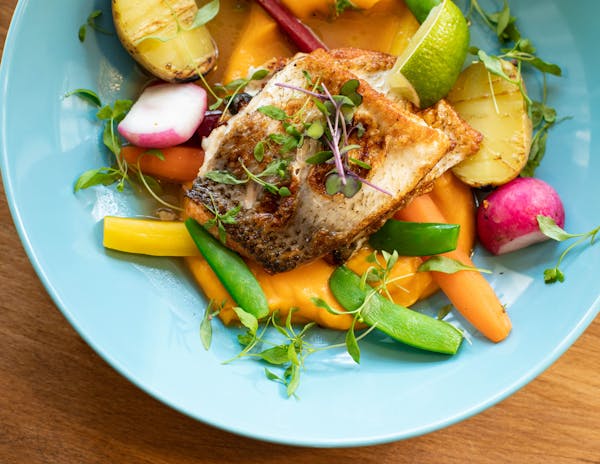
Allergen Risk
Shellfish are common allergens, and hikers with allergies should avoid them. Even cross-contamination can trigger allergic reactions, so it’s important to be cautious if hiking with a group.
Potential Spoilage
For example, Fresh shellfish can spoil quickly if not properly stored or kept at the right temperature. It is crucial to pack shellfish in airtight containers and, if necessary, keep them in a cooler for freshness.
Odor Concerns
Some shellfish can have a strong odor, which might not be appealing to all hikers. It can also attract wildlife, which poses a risk when hiking in areas with bears or other animals.
Preparation Time
Some shellfish options, like shrimp jerky or mussel energy bars, require advanced preparation and dehydration, which might not be convenient for everyone.
Cost
High-quality shellfish snacks can be more expensive than other hiking foods like trail mix or granola bars, making them less budget-friendly for some hikers.
Balancing the benefits and downsides, shellfish can be a fantastic hiking food when chosen and prepared carefully.
FAQ
Q: Are shellfish good for hiking?
A: Yes, shellfish are high in protein and nutrient-dense, making them a great choice for hiking.
Q: How should I pack shellfish for hiking?
A: Use canned, vacuum-sealed, or freeze-dried options for portability and freshness.
Q: Can shellfish cause allergies?
A: Yes, shellfish are common allergens, so those with allergies should avoid them.
Q: What are some easy shellfish snacks for hiking?
A: Shrimp jerky, crab chips, and lobster pâté are all great options.
Q: How long can I store shellfish snacks?
A: Vacuum-sealed or canned shellfish can have a long shelf life, but check expiration dates.
Conclusion
In conclusion, Shellfish can be an excellent addition to your hiking food options, offering a nutritious, protein-packed, and flavorful alternative to traditional trail snacks. With various forms like smoked, dried, or canned, shellfish provides a portable and lightweight solution for staying energized on the trail. While considerations like allergen risks and proper storage are essential, the benefits of nutrient density, variety, and convenience make shellfish a worthy choice for outdoor enthusiasts. So, pack some shellfish hiking snacks for your next adventure and enjoy the taste and energy boost they bring to your journey!
[sp_easyaccordion id=”292″]

